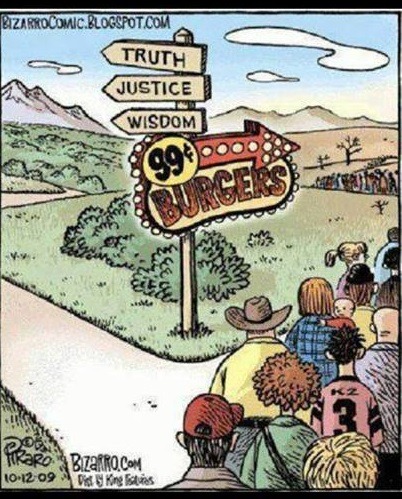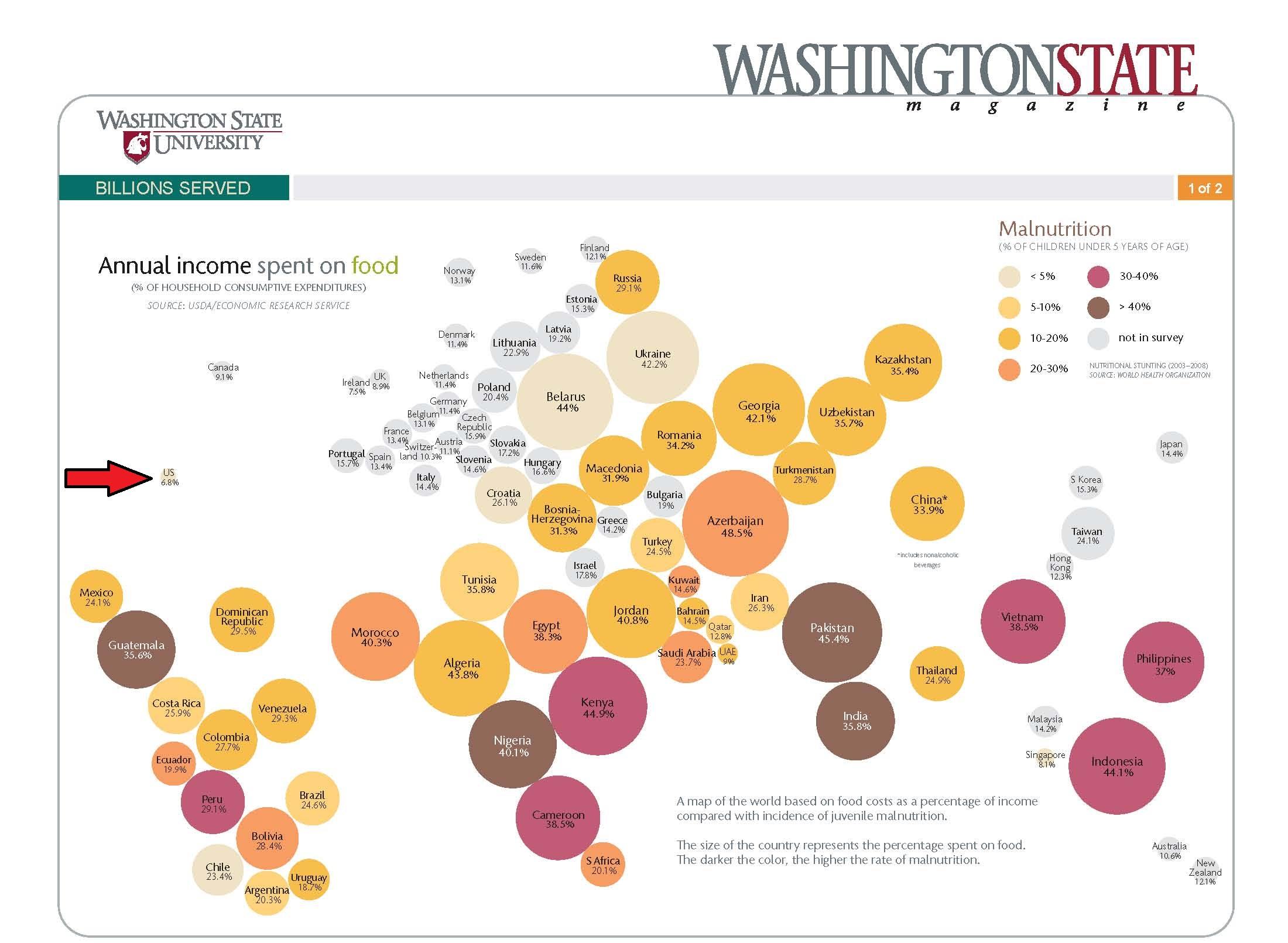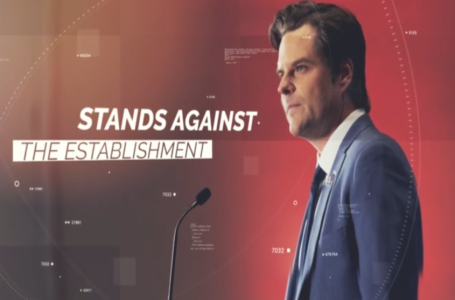The End of Cheap Food is Near as a Highly Technological and Fragile System Faces Collapse

Comments by Brian Shilhavy
Editor, Health Impact News
Charles Hugh Smith published an excellent commentary yesterday about how the era of cheap food in America is quickly coming to an end.
As a producer and marketer of high quality food produced by small-scale enterprises for the past 20+ years, this is a topic near and dear to my heart, and one I have written about frequently for the past couple of decades, warning that a day like this was coming.
Prior to the Industrial Age ushered in by WWII, for thousands of years a person’s or family’s wealth was not measured by how much money one had in a bank account, but by how much real assets they owned, primarily in agriculture. Even in the pages of the Bible this is clearly seen, where people of wealth and nobility were owners of fields, flocks, cattle, and other agricultural-based assets.
When the United States was founded in the late 1700s, 90% of the country’s population was involved in agriculture. Many of our “founding fathers” brought their wealth to the U.S. and invested in agriculture, many of them bringing their African slaves with them to work the fields, whether it was producing food, or other commerce ag products such as tobacco in eastern coastal states, or cotton in the south.
By the time of the Civil War under Lincoln, about 50% of the population had moved into urban areas, while the other 50% of the population was still employed in agriculture.
But in today’s highly technological society where only a handful of companies produce food for the rest of the population, less than 1% of the population is employed in agriculture, and a huge percentage of those are illegal immigrants providing cheap labor to do the dirty jobs most Americans feel are beneath them to perform.
As Smith points out in the article below, few Americans have any idea how their food is produced or what is needed to bring it to their local grocery stores. It has become a highly technological system requiring inputs that only a handful of corporations supply, in what is a very fragile supply-chain dependent system.
Along with this very technological system, are government subsidies that keep food prices low and allow the U.S. to dominate the world in the key crops that are the backbone of the agriculture system: corn, wheat, and soy.
So as the system collapses, those poor countries that got used to purchasing food from the U.S. because it was cheaper to import it than grow their own food at market rates, will be the first ones to suffer.
In the U.S., Americans spend the least amount of their income on food than any other nation in the world.
Selling high-quality uncontaminated food produced by small-scale producers for over 20 years now, I can testify to the fact that the #1 complaint we have received over the years about the food we sell, is: “It’s too expensive. How do you expect me to feed my family at these prices?”
Of course, we are selling food at its actual value because it is not subsidized by the government, and we pay a fair share to those who produce it, since it is more labor intensive.
But it would be interesting to look at the budgets of all those who have complained about our prices over the years, to see how much they spend for a cup of coffee at Starbucks, or how high their car payments are, how much they spend eating out and other entertainment venues, etc.

Americans are just used to cheap, mass produced junk food, and those days are fast coming to an end.
And while I have written on this issue frequently for the past couple of decades, it is not like I did not put forward a solution to this problem, because we did. We offered de-centralized non-subsidized food produced by small-scale and mostly family producers produced at a local level. (And we still do!)
If a large enough portion of the American public had chosen to support such micro-enterprises by spending more and valuing more high quality food, we would have far more food security today.
But now, it is probably too late for most, and real pain and suffering seems inevitable, because as Smith correctly points out in his article, technology will not solve this problem. Technology actually created it, and the American consumer allowed it to happen.
For more on this topic, see this article I published in 2013:
YOU the Taxpayer are Funding the Agri Business Takeover of our Food Supply
The End of Cheap Food
Global food production rests on soil and rain. Robots don’t change that.
Of all the modern-day miracles, the least appreciated is the incredible abundance of low cost food in the U.S. and other developed countries. The era of cheap food is ending, for a variety of mutually reinforcing reasons.
We’ve become so dependent on industrial-scale agriculture fueled by diesel that we’ve forgotten that when it comes to producing food, “every little bit helps”–even small backyards / greenhouses can provide meaningful quantities of food and satisfaction.
Virtually every temperate terroir/micro-climate is suitable for raising some plants, herbs, trees and animals. (Terroir includes everything about a specific place: the soil type, the climate variations, sun exposure, the bacteria in the soil, everything.)
We’ve forgotten that cities once raised much of the food consumed by residents within the city limits. Small plots of land, rooftop gardens, backyard chicken coops, etc. can add up when they are encouraged rather than discouraged.
Let’s start with how disconnected the vast majority of us are from the production of the cheap food we take for granted. A great many people know virtually nothing about how food is grown, raised, harvested / slaughtered, processed and packaged.
Highly educated people cannot recognize a green bean plant because they’ve never seen one. They know nothing about soil or industrial farming. They’ve never seen the animals they eat up close or cared for any of the animals humans have tended for their milk, eggs and flesh for millennia.
Most of us take the industrial scale of agriculture and the resulting abundance and low cost for granted, as if it was a kind of birthright rather than a brief period of reckless consumption of resources that cannot be replaced.
Small-scale agriculture is financially difficult because it is competing with global industrial agriculture powered by hydrocarbons and low-cost overseas labor.
That said, it is possible to develop a niche product with local support by consumers and businesses. This is the Half-X, Half-Farmer model I’ve written about for years: if the household has at least one part-time gig that pays a decent wage, the household can pursue a less financially rewarding niche in agriculture/animal husbandry. Degrowth Solutions: Half-Farmer, Half-X (July 19, 2014)
Industrial agriculture includes many elements few fully understand. The shipping of fruit thousands of miles via air freight is a function of 1) absurdly cheap jet fuel and 2) global tourism, which fills airliners with passengers who subsidize the air cargo stored beneath their feet.
When global tourism dried up in the Covid lockdown, so did air cargo capacity.
I have to laugh when I read another article about some new agricultural robot that will replace human labor, as if human labor were the key cost in industrial agriculture. (Hydrocarbons, fertilizer, transport, compliance costs, land leases and taxes are all major costs.)
Left unsaid is the reliance of industrial agriculture on soil, fresh-water aquifers and rain. Irrigation is the result of rain/snow somewhere upstream.
Once the soil and aquifers are depleted and the rain become erratic, the robot will be tooling around a barren field, regardless of whatever whiz-bang sensors and other gear it carries.
Global food production rests on soil and rain. Robots don’t change that. What few of us who rely on industrial agriculture understand is that it depletes soil and drains aquifers by its very nature, and these resources cannot be replaced with technology. Once they’re gone, they’re gone.
Soil can be rebuilt but it can’t be rebuilt by industrial agricultural methods–diesel-powered tractors and fertilizers derived from natural gas.
Few people appreciate that the dirt is itself alive, and once it’s dead then nothing much will grow in it. Whatever can be coaxed from depleted soil lacks the micronutrients that we all need: plants, animals and humans.
Every organism is bound by the Law of Minimums: heaping on one nutrient is useless unless all the essential nutrients are available in the right proportions.
Dumping excessive nitrogen fertilizer on a plant won’t make it yield more fruit unless it has sufficient calcium, sulfur, magnesium, etc. All dumping more nitrogen fertilizer on the field does is poison waterways as the excess nitrogen runs off.
Irrigation is another miracle few understand. Over time, the natural salts in water build up in irrigated soil and the soil loses fertility. The drier the climate, the less rain there is to leach the salts from the soil. Irrigation isn’t sustainable over the long run.
Plants need reliable conditions to reach maturity. Should a plant or tree be starved of water and nutrients, its immune system weakens and it is more vulnerable to diseases and insect infestations. Yields plummet if there isn’t enough water and nutrients to support the fruit or grain.
Extreme weather wreaks havoc on agriculture, even industrial agriculture. A crop can grow oh-so nicely and reach maturity, and then a wind storm or pounding rain can destroy the crop in a few hours.
Most people assume there will always be an abundance of grains (rice, wheat, corn) without realizing that the vast majority of grains come from a handful of places with the right conditions for industrial agriculture. Should any of these few places suffer erratic climate change, then exports of grains will shrink dramatically.
Once cheap grains are gone, cheap meat is also gone, because most meat depends on grain feed.
The scale required to grow an abundance of grain is other-worldly. Much of Iowa, for example, is fields of corn and soybeans, a significant percentage of which becomes animal feed.
American tourists ooh and ahh over artisanal goat cheese in France or Italy without any appreciation for the human labor that goes into the artisanal food, labor that can’t be replaced by robots.
Industrial agriculture only works at vast economies and scale and high utilization rates. The 10-pound bag of chicken thighs is only $25 because tens of millions of chickens are raised in carefully engineered factory conditions and slaughtered / cleaned on an industrial scale.
Should the utilization rate and scale drop, the entire operation ceases to be economically viable.
Global industrial agriculture relies on exploiting low-cost labor forces and soil that hasn’t yet been depleted. This is why clear-cutting the Amazon is so profitable: hire desperate workers with few other options to earn cash money, stripmine the soil until it’s infertile and then move on.
There are many misunderstandings about industrial agriculture and the reliance on cheap hydrocarbons. Many pin their hopes on organic vegetables without realizing every organic tomato is still 5 teaspoons of diesel and 5 teaspoons of jet fuel if it’s grown on an industrial scale and shipped thousands of miles via air.
Much of the planet is not conducive to high-yield agriculture. The soil is infertile or depleted, and restoring it is a multi-year or multi-decade process of patient investment that isn’t profitable on an industrial scale.
As a means to make money, localized production can’t compete with industrial agriculture. But that’s not the goal. The goal is to replace dependence on industrial agriculture with our own much smaller, optimized-for-our-locale production, and grow a surplus that helps feed our trusted network of family, friends and neighbors.
As industrial agriculture consumes the last of its soils and aquifers, hydrocarbons and mineral fertilizers are becoming costly, and as climate change disrupts the 50+ years of relatively mild, reliable weather we’ve enjoyed, cheap food will vanish.
Once the scale and utilization rates decay, industrial agriculture will no longer be viable economically or environmentally. This dependence on scale and utilization rates is poorly understood. We assume that somebody will continue growing our food on a vast scale regardless of any other conditions, but any activity must be financially and environmentally viable or it goes away.
As industrial agriculture decays, food will become much more expensive: even if it doubles, it’s still cheap to what it may cost in the future.
Due to our dependence on industrial agriculture, we’ve forgotten how productive localized (artisanal) food production can be. Small operations aligned with the terroir can produce a surprising amount of food.
The future of sustainable, affordable, nutritious food is in localized production optimized for what grows well without industrial interventions. The satisfaction and well-being this connection with the land and Nature generates is under-appreciated. It is not accidental that the long-lived healthy people among us–for example, the Blue Zones Okinawans and Greek islanders–tend their gardens and animals, and share the bounty of their labor with their families, friends and neighbors.
It’s fun and rewarding to grow food. It might even become important. Those who can’t grow any food would do well to befriend those who do.
The goal isn’t to replace industrial agriculture. The goal is to reduce our dependency on unsustainable global systems by reinvigorating localized production.


Read the full article at of two minds.
Related:
Unmasking The Global Food Cartel: Is Massive Starvation and Population Reduction Their Next Move?
The Collapse of the Global Food System – Massive Starvation and Death Worldwide is now Imminent
See Also:


















